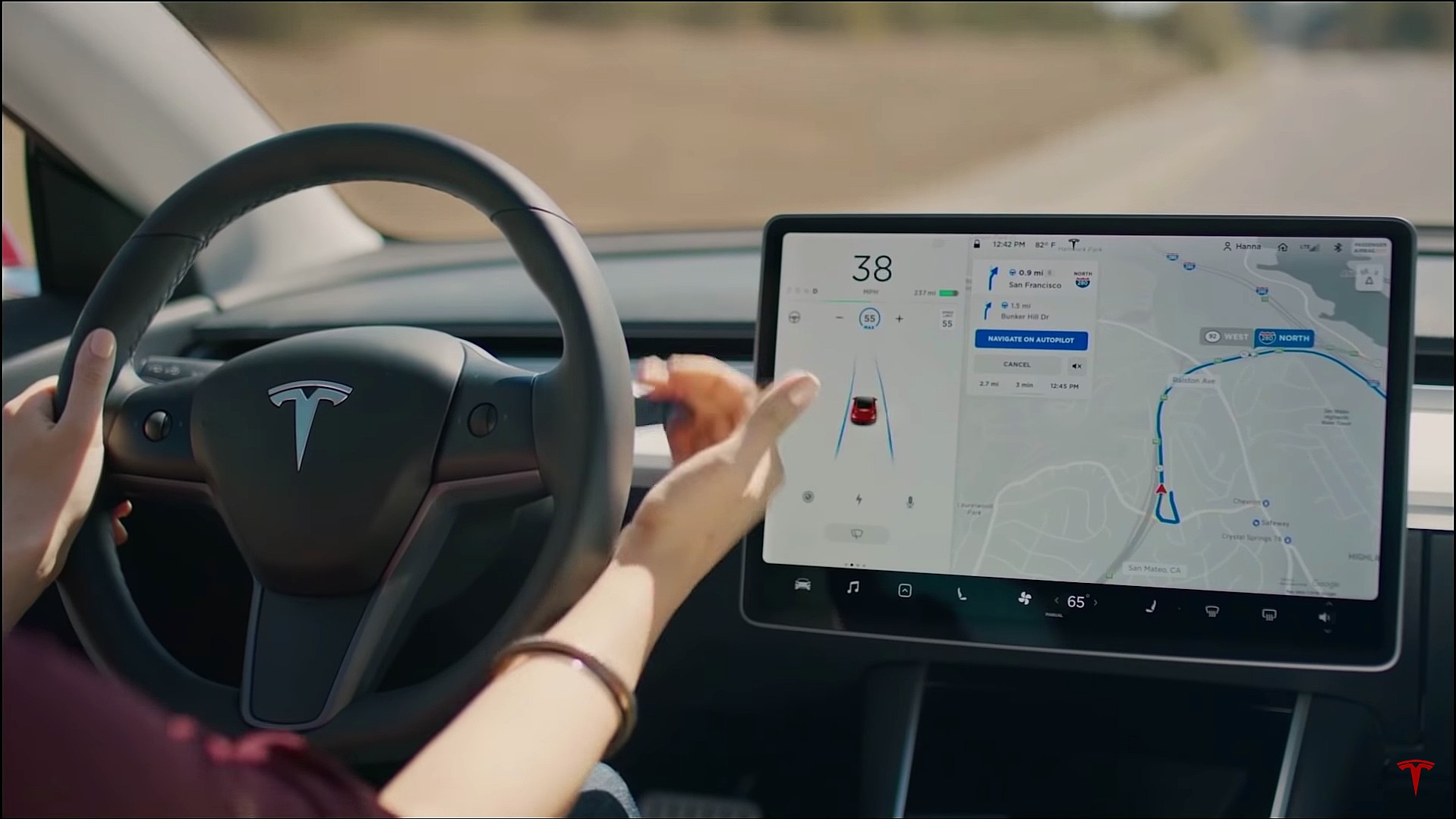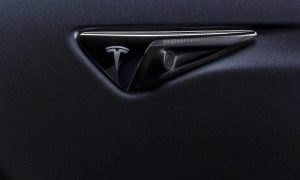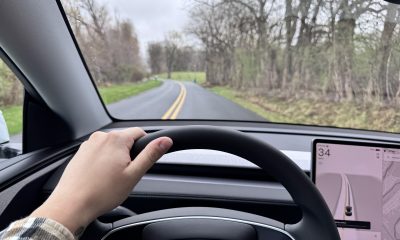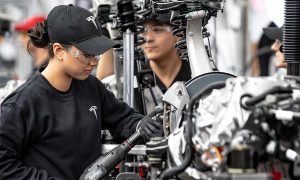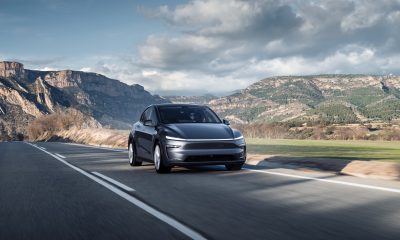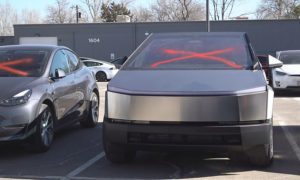Tesla Autopilot continues to be taboo to many people, and it is understandable. In a world where people have absolute control over everything in their life, it is tough to assume many people would be comfortable with their car driving itself. But the issue is, many people, countries, and entities are not willing to give the self-driving characteristic a chance.
Despite Autopilot’s impressive performance figures, Germany announced this week that Tesla could not use the word “Autopilot” in any advertising, because it still requires the driver to remain attentive during its use. But the problem is, Autopilot, in any sense of the word, doesn’t state the vehicle in question can operate entirely on its own. Tesla’s description of the function also requires the driver to keep their hands on the wheel at all times in case of an emergency.
But the issue really comes down to the taboo subject of self-driving vehicles. To my surprise, many people outside the Tesla community are still uninformed and misguided on Autopilot’s capabilities. Every time one of my friends or family members see a Tesla, they automatically think it’s driving itself, and the operator is sitting in the passenger seat playing on their phone.
We all know that Autopilot doesn’t work that way. And even though Tesla is head and shoulders above the competition in terms of self-driving capabilities, they still can’t drive themselves, but the company has never indicated that their vehicles are fully autonomous.
The Tesla community knows that.
However, there are groups of people and even entire countries that still seem to believe that Tesla’s Autopilot claims are unrealistic and “misleading.” In reality, the company’s cars do exactly what the electric automaker claims they do.
This is not the first time a country has thrown Autopilot away because Israel altogether outlawed any use of the capability in the past. However, after revisiting the case, Israel government officials got a more concrete understanding of how Autopilot works, and they allowed the use of the feature by vehicles that were capable of using it.
A big thanks to our long-time supporters and new subscribers! Thank you.
In my opinion, everyone who is skeptical of Autopilot, especially those who are government officials, should be required to undergo a crash course of the feature and take a ride in a Tesla vehicle while it is using the characteristic.
However, there is something even more surprising to me personally about all of the taboo there is surrounding Autopilot. More of it is from Tesla skeptics and TSLAQ, but you rarely hear about Autopilot navigating through tricky road layouts on mainstream media outlets. It is more about Tesla vehicles that were using Autopilot, ending up in accidents.
Teslarati has covered a series of examples of Autopilot navigating plenty of interesting terrains and situations with relative ease. We cover accidents, too, but we clarify how they occurred. For example, this past week, a Model S collided with a State Trooper and an Ambulance. However, the driver was under suspicion for DUI, although it has not yet been confirmed.
Autopilot is a way for drivers to take the stress out of driving. I know, personally, that I don’t like driving very much. I was in two car accidents in high school, I was not the driver in either instance. Along with seeing accidents on I-95 near Baltimore and other winding backroads near my house, drivers scare me, and I rarely trust anyone operating a car that I’m in.
I would feel safer if Autopilot was operating every car on the road. Not only would the cars get better every single day because of Tesla’s Neural Net, but people wouldn’t be so unpredictable with their driving behavior, and I genuinely believe we all would be much better off.
In the past, technological advancements have been second-guessed. At one time, NASA launched a spaceship to the Moon, and it used less technology than an iPhone. Things advance and opinions change on something. People are going to eventually warm up to the idea of a car driving itself, and there is a chance that even the most vocal skeptics of the self-driving car movement will ultimately utilize the capability to get them from Point A to Point B.
Please consider Subscribing and joining me next week as I go ‘Beyond the News’
News
Tesla cleared in Canada EV rebate investigation
Tesla has been cleared in an investigation into the company’s staggering number of EV rebate claims in Canada in January.

Canadian officials have cleared Tesla following an investigation into a large number of claims submitted to the country’s electric vehicle (EV) rebates earlier this year.
Transport Canada has ruled that there was no evidence of fraud after Tesla submitted 8,653 EV rebate claims for the country’s Incentives for Zero-Emission Vehicles (iZEV) program, as detailed in a report on Friday from The Globe and Mail. Despite the huge number of claims, Canadian authorities have found that the figure represented vehicles that had been delivered prior to the submission deadline for the program.
According to Transport Minister Chrystia Freeland, the claims “were determined to legitimately represent cars sold before January 12,” which was the final day for OEMs to submit these claims before the government suspended the program.
Upon initial reporting of the Tesla claims submitted in January, it was estimated that they were valued at around $43 million. In March, Freeland and Transport Canada opened the investigation into Tesla, noting that they would be freezing the rebate payments until the claims were found to be valid.
READ MORE ON ELECTRIC VEHICLES: EVs getting cleaner more quickly than expected in Europe: study
Huw Williams, Canadian Automobile Dealers Association Public Affairs Director, accepted the results of the investigation, while also questioning how Tesla knew to submit the claims that weekend, just before the program ran out.
“I think there’s a larger question as to how Tesla knew to run those through on that weekend,” Williams said. “It doesn’t appear to me that we have an investigation into any communication between Transport Canada and Tesla, between officials who may have shared information inappropriately.”
Tesla sales have been down in Canada for the first half of this year, amidst turmoil between the country and the Trump administration’s tariffs. Although Elon Musk has since stepped back from his role with the administration, a number of companies and officials in Canada were calling for a boycott of Tesla’s vehicles earlier this year, due in part to his association with Trump.
News
Tesla Semis to get 18 new Megachargers at this PepsiCo plant
PepsiCo is set to add more Tesla Semi Megachargers, this time at a facility in North Carolina.

Tesla partner PepsiCo is set to build new Semi charging stations at one of its manufacturing sites, as revealed in new permitting plans shared this week.
On Friday, Tesla charging station scout MarcoRP shared plans on X for 18 Semi Megacharging stalls at PepsiCo’s facility in Charlotte, North Carolina, coming as the latest update plans for the company’s increasingly electrified fleet. The stalls are set to be built side by side, along with three Tesla Megapack grid-scale battery systems.
The plans also note the faster charging speeds for the chargers, which can charge the Class 8 Semi at speeds of up to 1MW. Tesla says that the speed can charge the Semi back to roughly 70 percent in around 30 minutes.
You can see the site plans for the PepsiCo North Carolina Megacharger below.

Credit: PepsiCo (via MarcoRPi1 on X)

Credit: PepsiCo (via MarcoRPi1 on X)
READ MORE ON THE TESLA SEMI: Tesla to build Semi Megacharger station in Southern California
PepsiCo’s Tesla Semi fleet, other Megachargers, and initial tests and deliveries
PepsiCo was the first external customer to take delivery of Tesla’s Semis back in 2023, starting with just an initial order of 15. Since then, the company has continued to expand the fleet, recently taking delivery of an additional 50 units in California. The PepsiCo fleet was up to around 86 units as of last year, according to statements from Semi Senior Manager Dan Priestley.
Additionally, the company has similar Megachargers at its facilities in Modesto, Sacramento, and Fresno, California, and Tesla also submitted plans for approval to build 12 new Megacharging stalls in Los Angeles County.
Over the past couple of years, Tesla has also been delivering the electric Class 8 units to a number of other companies for pilot programs, and Priestley shared some results from PepsiCo’s initial Semi tests last year. Notably, the executive spoke with a handful of PepsiCo workers who said they really liked the Semi and wouldn’t plan on going back to diesel trucks.
The company is also nearing completion of a higher-volume Semi plant at its Gigafactory in Nevada, which is expected to eventually have an annual production capacity of 50,000 Semi units.
Tesla executive teases plan to further electrify supply chain
News
Tesla sales soar in Norway with new Model Y leading the charge
Tesla recorded a 54% year-over-year jump in new vehicle registrations in June.

Tesla is seeing strong momentum in Norway, with sales of the new Model Y helping the company maintain dominance in one of the world’s most electric vehicle-friendly markets.
Model Y upgrades and consumer preferences
According to the Norwegian Road Federation (OFV), Tesla recorded a 54% year-over-year jump in new vehicle registrations in June. The Model Y led the charge, posting a 115% increase compared to the same period last year. Tesla Norway’s growth was even more notable in May, with sales surging a whopping 213%, as noted in a CNBC report.
Christina Bu, secretary general of the Norwegian EV Association (NEVA), stated that Tesla’s strong market performance was partly due to the updated Model Y, which is really just a good car, period.
“I think it just has to do with the fact that they deliver a car which has quite a lot of value for money and is what Norwegians need. What Norwegians need, a large luggage space, all wheel drive, and a tow hitch, high ground clearance as well. In addition, quite good digital solutions which people have gotten used to, and also a charging network,” she said.
Tesla in Europe
Tesla’s success in Norway is supported by long-standing government incentives for EV adoption, including exemptions from VAT, road toll discounts, and access to bus lanes. Public and home charging infrastructure is also widely available, making the EV ownership experience in the country very convenient.
Tesla’s performance in Europe is still a mixed bag, with markets like Germany and France still seeing declines in recent months. In areas such as Norway, Spain, and Portugal, however, Tesla’s new car registrations are rising. Spain’s sales rose 61% and Portugal’s sales rose 7% last month. This suggests that regional demand may be stabilizing or rebounding in pockets of Europe.
-

 Elon Musk2 weeks ago
Elon Musk2 weeks agoTesla investors will be shocked by Jim Cramer’s latest assessment
-

 Elon Musk2 days ago
Elon Musk2 days agoxAI launches Grok 4 with new $300/month SuperGrok Heavy subscription
-

 Elon Musk4 days ago
Elon Musk4 days agoElon Musk confirms Grok 4 launch on July 9 with livestream event
-

 News1 week ago
News1 week agoTesla Model 3 ranks as the safest new car in Europe for 2025, per Euro NCAP tests
-

 Elon Musk2 weeks ago
Elon Musk2 weeks agoA Tesla just delivered itself to a customer autonomously, Elon Musk confirms
-

 Elon Musk1 week ago
Elon Musk1 week agoxAI’s Memphis data center receives air permit despite community criticism
-

 News2 weeks ago
News2 weeks agoXiaomi CEO congratulates Tesla on first FSD delivery: “We have to continue learning!”
-

 News2 weeks ago
News2 weeks agoTesla sees explosive sales growth in UK, Spain, and Netherlands in June

